Related Research Articles

Hadrian was Roman emperor from 117 to 138. A member of the Nerva-Antonine dynasty and one of the so-called "Five Good Emperors", known for his travels throughout the empire and the civil and military constructions of his reign. Later historians regarded Hadrian as a "benevolent dictator"; his own Senate found him remote and authoritarian. He has been described as enigmatic and contradictory, with a capacity for both great personal generosity and extreme cruelty and driven by insatiable curiosity, conceit, and ambition.

Marcus Opellius Macrinus was Roman emperor from April 217 to June 218, reigning jointly with his young son Diadumenianus. As a member of the equestrian class, he became the first emperor who did not hail from the senatorial class and also the first emperor who never visited Rome during his reign. Before becoming emperor, Macrinus served under Emperor Caracalla as a praetorian prefect and dealt with Rome's civil affairs. He later conspired against Caracalla and had him murdered in a bid to protect his own life, succeeding him as emperor.

Marcus Aurelius Antoninus, better known by his nickname Caracalla, was Roman emperor from 198 to 217 AD. He was a member of the Severan dynasty, the elder son of Emperor Septimius Severus and Empress Julia Domna. Proclaimed co-ruler by his father in 198, he reigned jointly with his brother Geta, co-emperor from 209, after their father's death in 211. His brother was murdered by the Praetorian Guard later that year under orders from Caracalla, who then reigned afterwards as sole ruler of the Roman Empire. Caracalla found administration to be mundane, leaving those responsibilities to his mother. Caracalla's reign featured domestic instability and external invasions by the Germanic peoples.

Classical antiquity, also known as the classical era, classical period, classical age, or simply classical history or antiquity, is the period of cultural history between the 8th century BC and the 5th century AD comprising the interwoven civilizations of Ancient Greece and Ancient Rome known together as the Greco-Roman World, centered on the Mediterranean Basin. It is the period in which ancient Greece and ancient Rome flourished and wielded huge influence throughout much of Europe, North Africa, and West Asia.
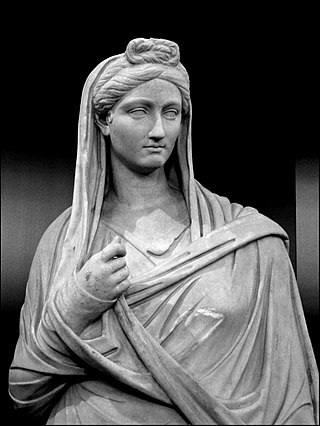
Freeborn women in ancient Rome were citizens (cives), but could not vote or hold political office. Because of their limited public role, women are named less frequently than men by Roman historians. But while Roman women held no direct political power, those from wealthy or powerful families could and did exert influence through private negotiations. Exceptional women who left an undeniable mark on history include Lucretia and Claudia Quinta, whose stories took on mythic significance; fierce Republican-era women such as Cornelia, mother of the Gracchi, and Fulvia, who commanded an army and issued coins bearing her image; women of the Julio-Claudian dynasty, most prominently Livia and Agrippina the Younger, who contributed to the formation of Imperial mores; and the empress Helena, a driving force in promoting Christianity.
Gaius Avidius Cassius was a Syrian Roman general and usurper. He was born in Cyrrhus, and was the son of Gaius Avidius Heliodorus, who served as praefectus or governor of Roman Egypt, and Julia Cassia Alexandra, who was related to a number of royal figures, including her descent from both Augustus and Herod the Great. He began his military career under Antoninus Pius, rising to the status of legatus legionis. He served during the Parthian war of Lucius Verus, in which he distinguished himself, for which he was elevated to the Senate, and later made Imperial legate. During the Bucolic War, he was given the extraordinary title of Rector Orientis, giving him Imperium over all of the eastern provinces of the Roman Empire.

The Via Aurelia is a Roman road in Italy constructed in approximately 241 BC. The project was undertaken by Gaius Aurelius Cotta, who at that time was censor. Cotta had a history of building roads for Rome, as he had overseen the construction of a military road in Sicily connecting Agrigentum and Panormus.

The Intercollegiate Center for Classical Studies in Rome (ICCS) is an overseas study center located in Rome, Italy for undergraduate students in fields related to Classical Studies. It was first established in 1965 by ten American colleges and universities; by 2007 the number of member institutions had grown to 113. It is sometimes called the Centro, the Italian word for center.
Richard John Alexander Talbert is a British-American contemporary ancient historian and classicist on the faculty of the University of North Carolina at Chapel Hill, where he was William Rand Kenan, Jr., Professor of History and is currently Research Professor in charge of the Ancient World Mapping Center. Talbert is a leading scholar of ancient geography and ideas of space in the ancient Mediterranean world.
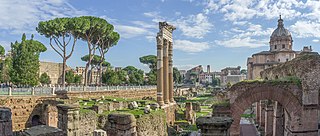
The Forum of Caesar, also known by the Latin Forum Iulium or Forum Julium, Forum Caesaris, was a forum built by Julius Caesar near the Forum Romanum in Rome in 46 BC.
The military campaigns of the Samnite Wars were an important stage in Roman expansion in the Italian Peninsula.
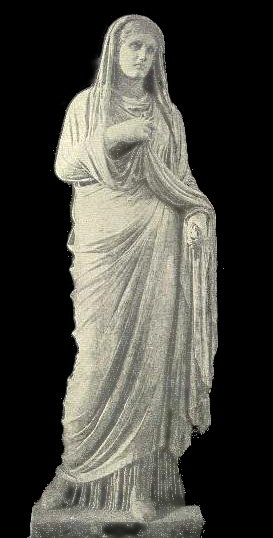
Eumachia was a Roman business entrepreneur and priestess. She served as the public priestess of Venus Pompeiana in Pompeii as well as the matron of the Fullers guild. She is known primarily from inscriptions on a large public building which she financed and dedicated to Pietas and Concordia Augusta.

A collegium or college was any association in ancient Rome that acted as a legal entity. Such associations could be civil or religious. The word collegium literally means "society", from collega ("colleague"). They functioned as social clubs or religious collectives whose members worked towards their shared interests. These shared interests encompassed a wide range of the various aspects of urban life; including political interests, cult practices, professions, trade, and civic services. The social connections fostered by collegia contributed to their influence on politics and the economy; acting as lobbying groups and representative groups for traders and merchants.
Julia Balbilla was a Roman noble woman and poet. Whilst in Thebes, touring Egypt as part of the imperial court of Hadrian, she inscribed three epigrams which have survived.
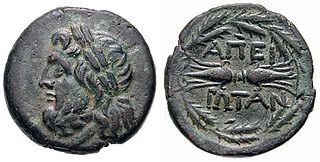
The Epirote League was an ancient Greek coalition, or koinon, of Epirote tribes.

Plancia Magna was a prominent woman of Perga in the Roman province of Lycia et Pamphylia who lived in the 1st and 2nd centuries. During her life she was not only a high priestess, but a member of the decurio and a benefactress to the city, funding the restoration of the main city gates between the years AD 119 and 120.

The topography of ancient Rome is the description of the built environment of the city of ancient Rome. It is a multidisciplinary field of study that draws on archaeology, epigraphy, cartography and philology. The word 'topography' here has its older sense of a description of a place, now often considered to be local history, rather than its usual modern meaning, the study of landforms.
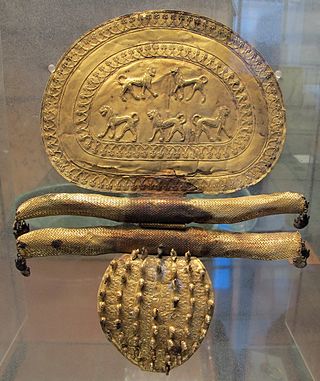
The tomb known as the Regolini-Galassi tomb is one of the wealthiest Etruscan family tombs in Caere, an ancient city in Italy approximately 50–60 kilometres (31–37 mi) north-northwest of Rome. The tomb dates to between 680/675-650 BC. Based on the evidence of the tomb's architecture and its contents, it was built by a wealthy family of Caere. The grave goods included with the two decedents included bronze cauldrons and gold jewellery of Etruscan origin in the Oriental style. The tomb was discovered in 1836 in modern-day Cerveteri in an undisturbed condition and named after the excavators, general Vincenzo Galassi and the archpriest of Cerveteri, Alessandro Regolini. Both of these men had previous experience opening and excavating tombs in the area of Caere.
Amanda Jacqueline Claridge FSA was a British professor of Roman archaeology at Royal Holloway, University of London. Her research interests included "Roman archaeology, especially art, marble sculpture and the marble trade; Roman architecture and urbanism; topography and monuments of the city of Rome and Latium; Antiquarian studies in 16th and 17th century Rome."
Rhiannon Ash is a British classical scholar specialising in Latin literature and Tacitus. She is professor of Roman Historiography in the Faculty of Classics, University of Oxford, and a Fellow of Merton College, Oxford. She was formerly a lecturer at the Department of Greek and Latin at University College, London.
References
- ↑ "Mary T. Boatwright | Scholars@Duke". Duke University. Retrieved 22 January 2021.
- ↑ "Home | Society for Classical Studies".
- ↑ "Journal of Ancient History".